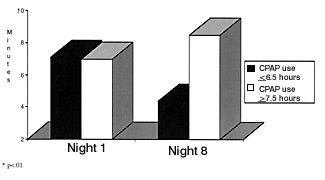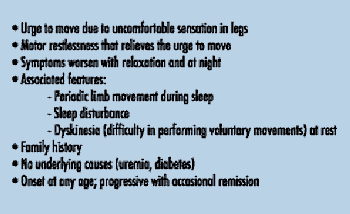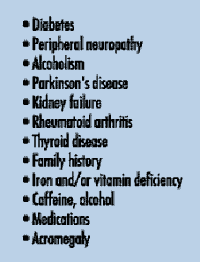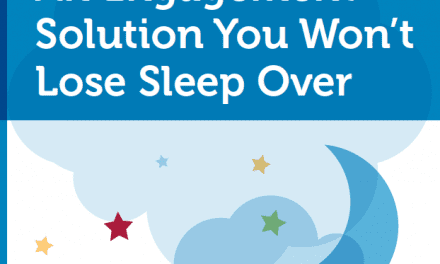Studies show pharmacotherapy for insomnia and daytime sleepiness may impact traffic safety.
Drowsy driving’s impact on traffic safety is underestimated not only by physicians and policy makers, but also by patients with conditions that put them at risk of becoming sleepy drivers. Therefore, it is essential to increase public knowledge on the impairing effects of sleepiness on driving ability and the potential risks of becoming involved in traffic accidents with sleepy drivers. According to a 2005 note from the US National Highway Traffic Safety Administration (NHTSA), drowsy driving is indeed a serious and underreported problem.1 A 2002 NHTSA survey already revealed that approximately 37% of drivers reported nodding off while driving.2
Furthermore, there is evidence that drowsy driving is involved in a considerable number of vehicle accidents, especially under monotonous conditions, such as driving on a highway track. However, monotony is only one thing that may aggravate a person’s state of sleepiness and thus increase the risk of traffic accidents. Many variables play a role in determining the magnitude of sleepiness, including circadian factors observed during shift work, whether the driving is done during the day or at night, individual differences in susceptibility to sleepiness, and the duration of the trip.3
People often take hypnotics in the hope of improving nightly sleep and reducing the daytime sleepiness caused by insomnia. Unfortunately, many hypnotics may impair daytime performance due to residual effects. Instead of waking up refreshed, hypnotics may extend their action after waking up. This is of great concern because the vast majority of those that use hypnotic drugs are outpatients who are likely to drive a car in the morning to go to work.
Given these patients’ potential risk for motor vehicle accidents,4 researchers have devoted considerable effort to examining the residual effects of hypnotics on driving ability. For example, laboratory tests and driving simulator experiments have shown that many driving-related skills and abilities may be impaired when treated with psychoactive drugs, such as hypnotics.
However, there are limits to what laboratory research can show. Although a laboratory setting enables investigators to examine the effects of hypnotics under strictly controlled conditions, up until now it has been difficult, if not impossible, to mimic real driving in an artificial laboratory environment.5 Over the years, researchers have developed various driving tests that can be performed in normal traffic. These include city driving tests and car following tests. Currently, the most prominently used test in driving research is the standardized on-the-road driving test.

Simulating Real Life
The standardized on-the-road driving test is a 100-km drive through real traffic on a two-lane primary highway using an instrumented vehicle equipped to continuously record driving performance. (See picture, this page.)
Subjects are instructed to drive with a constant speed (90 or 95 km/h) and a steady lateral position within the right (slower) traffic lane. They are allowed to deviate from the instructions in order to overtake a slower moving vehicle in the same traffic lane.
A camera, mounted on the roof of the instrumented vehicle, continuously records the lateral position of the car relative to the lane boundary. The amount of weaving of the car, measured by the standard deviation of the lateral position (SDLP, cm), is the primary safety parameter of the test.

As is evident in Figure 1 on the right, SDLP (weaving of the car) is clearly related to traffic safety. That is, reduced vehicle control causes SDLP increments that may result in excursions out of lane. Because such excursions can be dangerous, a licensed driving instructor who has access to dual controls sits in the right front seat of the vehicle and guards the safety of the subject and other drivers during the driving test.
In more than 50 studies, the on-the-road driving test during normal traffic showed it could detect drug-induced dose-related impairment due to use of various psychoactive drugs including alcohol,5 hypnotics,6 anxiolytics,7 antihistamines,8 and antidepressants.9
Benzodiazepine hypnotics’ Effects
Starting in the 1980s, several studies have examined the effects of benzodiazepine hypnotics on actual driving. Participants were healthy volunteers that received the recommended or twice the recommended dose of benzodiazepine hypnotics at bedtime. After one or two nights of treatment, driving tests were performed in the morning (10 to 11 hours after intake) and the afternoon (16 to 17 hours after intake). An overview of the results of these studies is shown in Figure 2 on the next page.

It is evident from Figure 2 that benzodiazepine hypnotics significantly impair driving performance, in both the morning session and the afternoon. The magnitude of impairment—which one can determine from Figure 2 by comparing the SDLP increments of subjects who took benzodiazepines with those of drivers with various blood alcohol levels10—depends on a variety of factors including the length of time after administration, the drug’s half-life, and the administered dose.
These experimental findings are in line with those found in epidemiological surveys of traffic accident risks of benzodiazepine users.6,11,12 Although tolerance develops after chronic daily use and a reduction in traffic accident ratio is evident after repeated daily use of benzodiazepines, it is still uncertain if driving performance returns to baseline levels. Future on-the-road studies should examine the long-term effects of benzodiazepine use on driving ability.
The Z drugs: A Better Alternative?
To overcome the daytime sedation caused by benzodiazepines, researchers developed a new generation of drugs to treat insomnia. These so-called Z drugs include zopiclone, zolpidem, and zaleplon.
With regard to producing driving impairment, zopiclone was comparable to the benzodiazepine hypnotics. On-the-road studies showed significant driving impairment after bedtime administration of zopiclone (7.5 mg) in the morning driving session. Consistent with this finding, epidemiological data11 showed a fourfold increase in traffic accident risk among zopiclone users.
When compared to zopiclone and the benzodiazepines, zolpidem and zaleplon have a more specific activity at gamma-amino butyric acid A (GABAa) receptor subunits and a much shorter half-life. Research showed zolpidem and zaleplon to be relatively safe. When administered at bedtime at the recommended dose (10 mg), no impairment was found in several driving studies. The use of zaleplon, but not zolpidem, also appeared safe when driving as soon as 4 hours after middle-of-the-night administration.5 The latter finding makes zaleplon suitable for usage as needed (ie, patients can wait and see if they can fall asleep and maintain sleep without the drug, and, if they do not, they can take zaleplon later during the night without residual effects the following morning). In contrast, sedative effects the following morning would be profound if patients took zopiclone or a benzodiazepine hypnotic during the night.
New sleep drugs on the horizon
Recently, researchers developed eszopiclone from zopiclone and introduced a new formulation of zolpidem (slow-release). However, it is unclear to what extent these drugs are an improvement in reducing residual effects when compared to their mother compounds.
Indiplon is another new hypnotic that acts specifically at the a1 subunit of the GABAa receptor complex and has an ultrashort half-life like zaleplon. In terms of avoiding residual sedative effects, promising medications also include the new hypnotics that aim not to act at the GABAa receptor complex. For example, ramelteon (TAK-375) is a melatonin receptor agonist with high affinity for both MT1 and MT2 receptors, but has no appreciable affinity for the GABAa receptor complex. Future studies should be conducted to examine the effects of these new hypnotics on driving ability.
Concluding remarks
The World Health Organization reports that the number of traffic deaths is increasing yearly.13 Although drowsiness is among the most reported causes of traffic accidents, its impact on driving ability is not always taken seriously. In addition, there is little public awareness that pharmacotherapy used to combat sleep disturbances can have residual effects that may compromise traffic safety.
Epidemiological data and on-the-road driving studies show that driving may be unsafe when the driver is treated with 7.5 mg doses of benzodiazepine hypnotics or zopiclone. Zolpidem and zaleplon, when taken at bedtime at their recommended dose (10 mg), are safe alternatives. New sleep medications that do not act on the GABAa receptor complex also may promise better treatment alternatives when it comes to traffic safety.
In addition to insomnia, excessive daytime sleepiness is commonly observed in sleep disorders such as narcolepsy, obstructive sleep apnea/hypopnea syndrome (OSAHS), and shift working sleep disorder. Further, patients suffering from medical conditions such as Parkinson’s disease, depression, myotonic dystrophy, multiple sclerosis, epilepsy, and head trauma may also complain of excessive sleepiness. For all these diseases and conditions, some have raised concerns whether it is safe for patients with these disorders to drive. Treatment may alleviate excessive daytime sleepiness, but up until now research has not established how this will affect traffic safety.
For a long time, psychostimulant drugs such as amphetamine derivatives, methylphenidate, and pemoline have been the most common therapies for excessive daytime sleepiness.14 The effects of these compounds have not been tested on the road. A promising drug in the area of excessive daytime sleepiness is modafinil. Laboratory tests and subjective assessments have shown that modafinil significantly improves alertness, reduces sleepiness, and improves executive functioning.14 Future studies should address whether modafinil has a positive effect on driving performance in narcoleptics or those suffering from shift working sleep disorder.
In addition, these driving studies should focus on several other important issues that so far have remained unaddressed but are major points of concern. First, since previous research is limited to the acute residual effects of hypnotics, these studies should examine the effects of long-term use of hypnotics on driving ability. Epidemiological evidence does point to persistent increased traffic accident risk for chronic benzodiazepine users,12 but researchers have not examined the effects of chronic daily use on on-the-road driving performance.
Second, driving studies should be performed in the intended patient population, such as insomniacs or narcoleptic patients. Up until now, on-the-road driving tests have been performed only on healthy volunteers. Although these studies give a good insight into the pure adverse effects of a drug on driving ability, studies on patients who actually suffer from sleep disturbances are needed to examine the complex interaction between the disease, the treatment, and the treatment’s adverse effects.
Third, many patients with sleep disturbances are elderly. Older individuals may be much more affected than younger counterparts by sleep disturbances and side effects of hypnotics.16 Hence, studies should be performed in elderly patients as well.
On World Health Day 2004, the World Health Organization advocated the start of worldwide prevention programs to improve road safety and reduce traffic deaths.13 Physicians can contribute to this effort by taking the effects of sleep medication on driving ability into account when prescribing a hypnotic, and by informing their patients about the possible risks of sleep medication with respect to driving safety.
Joris C. Verster, PhD, and Edmund R. Volkerts, PhD, are research associates at the Utrecht Institute for Pharmaceutical Sciences, Department of Psychopharmacology, University of Utrecht, The Netherlands; and Seithikurippu R. Pandi-Perumal, MSc, is a sleep disorders specialist at the Section of Sleep Medicine, Division of Clinical Neurophysiology and Epilepsy, Department of Neurology, SUNY Downstate Medical Center, Brooklyn, NY.
References
1. Vaca F. National Highway Traffic Safety Administration (NHTSA) Notes. Ann Emerg Med. 2005;45:433-434.
2. National Highway Transportation Safety Administration. National Survey of Distracted and Drowsy Driving Attitudes and Behavior: 2002. Washington, DC: Department of Transportation; 2002. DOT publication HS 809 566.
3. Horne JA, Reyner L. Vehicle accidents related to sleep: a review. Occup Environ Med. 1999,56:289-294.
4. McGwin G Jr, Sims RV, Pulley L, Roseman JM. Relations among chronic medical conditions, medications, and automobile crashes in the elderly: a population-based case-control study. Am J Epidemiol. 2000;152:424-431.
5. Verster JC, Volkerts ER, Schreuder AH, et al. Residual effects of middle-of-the-night administration of zaleplon and zolpidem on driving ability, memory functions, and psychomotor performance. J Clin Psychopharmacol. 2002;22:576-583.
6. Verster JC, Veldhuijzen DS, Volkerts ER. Residual effects of sleep medication on driving ability. Sleep Med Rev. 2004;8:309-325.
7. Verster JC, Veldhuijzen DS, Volkerts ER. Is it safe to drive a car when treated with anxiolytics? Evidence from on-the-road driving studies during normal traffic. Current Psychiatry Review. 2005;1:215-225.
8. Verster JC, Volkerts ER. Antihistamines and driving ability: evidence from on-the-road driving studies during normal traffic. Ann Allergy Asthma Immunol. 2004;92:294-304, 675.
9. Ramaekers JG. Antidepressants and driver impairment: empirical evidence from a standard on-the-road test. J Clin Psychiatry. 2003;64:20-29.
10. Louwerens JW, Gloerich ABM, De Vries G, Brookhuis KA, O’Hanlon JF. The relationship between drivers’ blood alcohol concentration (BAC) and actual driving performance during high speed travel. In: Noordzij PC, Roszbach R, eds. Alcohol, Drugs and Traffic Safety. Amsterdam: Excerpta Medica; 1987:183-192.
11. Barbone F, McMahon AD, Davey PG, et al. Association of road-traffic accidents with benzodiazepine use. Lancet. 1998;352:1331-1336.
12. Thomas RE. Benzodiazepine use and motor vehicle accidents. Systematic review of reported association. Can Fam Physician. 1998;44:799-808.
13. Peden M, Scurfield R, Sleet D, et al. World Report on Road Traffic Injury Prevention. Geneva: World Health Organization; 2004.
14. Banerjee D, Vitiello MV, Grunstein RR. Pharmacotherapy for excessive daytime sleepiness. Sleep Med Rev. 2004;8:339-354.
15. Walsh JK, Randazzo AC, Stone KL, Schweitzer PK. Modafinil improves alertness, vigilance, and executive function during simulated night shifts. Sleep. 2004;27:434-439.
16. Pandi-Perumal SR, Seils LK, Kayumov L, et al. Senescence, sleep, and circadian rhythms. Aging Research Reviews. 2002;1:559-604.




